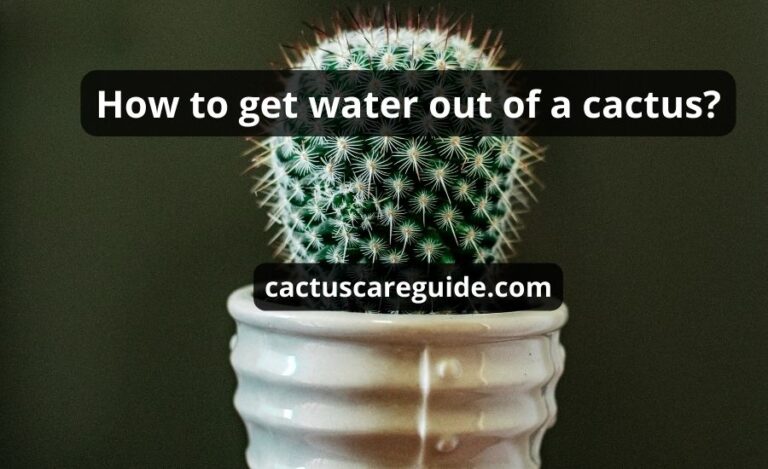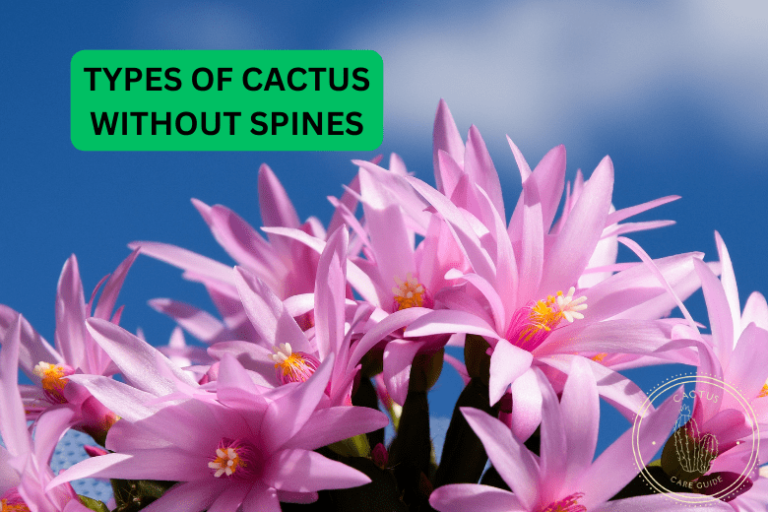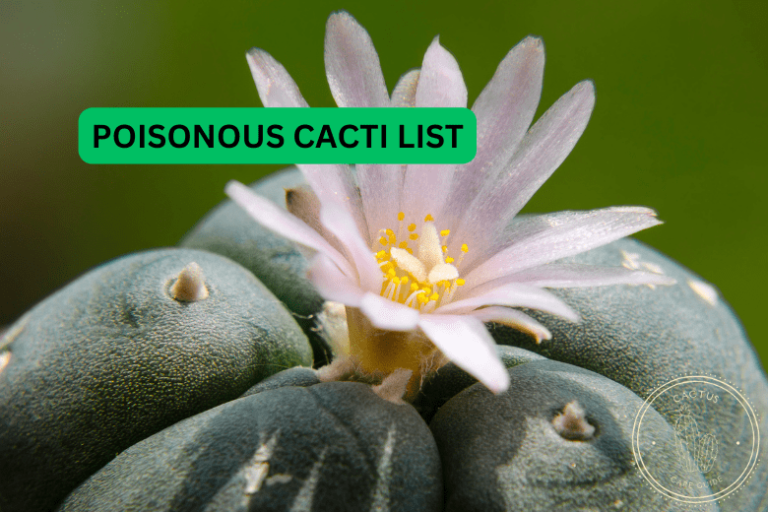Succulents That Like Full Sun and Heat: a Complete Guide
Finding the correct succulent plants that can resist intense heat, direct sun exposure, or hot sun and grow in such circumstances is essential when it comes to gardening in hot, sunny areas. Succulent plants are frequently the best choice for these harsh environments due to their special capacity to store water in their leaves and stems.
Succulent plants make excellent choices for gardens in full sun and hot climes due to their hardiness and capacity to adapt to arid environments.

In this article, we’ll look at a variety of succulents that can withstand heat and full sun, enabling you to design a colorful, low-maintenance garden that thrives in the sun’s rays, in addition to how much sun they need to survive. These succulent plants won’t let you down, whether you live in a desert area or simply have a sunny place in your garden that you’d like to fill with lovely and resilient plants.
Let’s learn about the heat-tolerant, sun-loving succulent plants that will add a touch of natural beauty to your indoor and outdoor space.
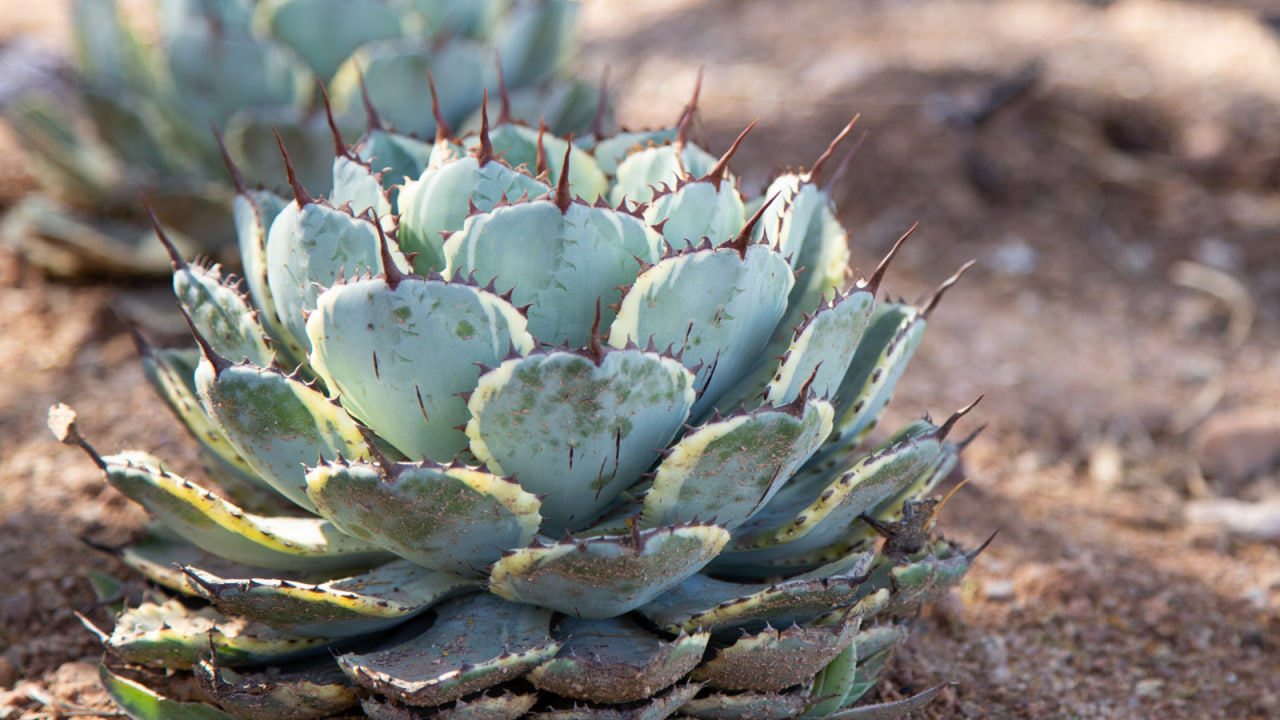
How much sun do Succulents need?
Understanding which succulents require the most sun and how much sun they need is essential before choosing which ones to include in your garden. For optimal growth, growing succulents should receive at least six hours of full sun or direct sunlight each day.
If you live in a region with too much sun, full sun exposure, partial shade, and hot summer temperatures, consider incorporating a trellis or other similar structure into your garden to provide your plants some afternoon shade. Additionally, stay away from growing succulents in locations that are shaded because they won’t be able to produce the energy they require to survive.
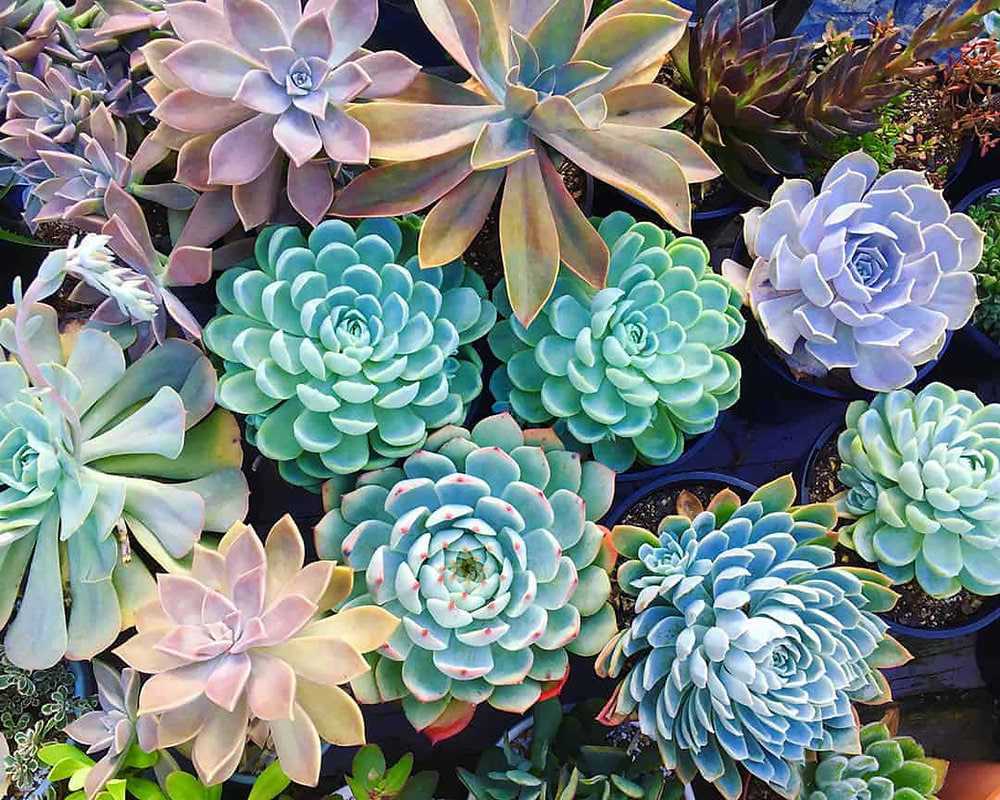
Best succulents for full hot sun
Because many succulents grow in hot sun, dry climates, they can store a lot of water in their leaves. They can endure the weather and a lack of water because of the reservoir in the leaves. Succulents are probably the lowest-maintenance plants you can discover due to this adaptation.
You just need to make sure they get too much sun and water them approximately once a week (depending on the conditions) if you intend to grow them in your garden. Here are the greatest succulents for full hot sun in case you’re unsure of what plants to add to your list.
Adenium – Adenium obesum
The succulent Desert Rose belongs to the Adenium genus of flowering plants. This genus species is distinguished by its broad bases and frequently works very well as bonsai plants. These beautiful plants are well adapted to the desert and full sun exposure because they can endure intense sunlight for quite some time.
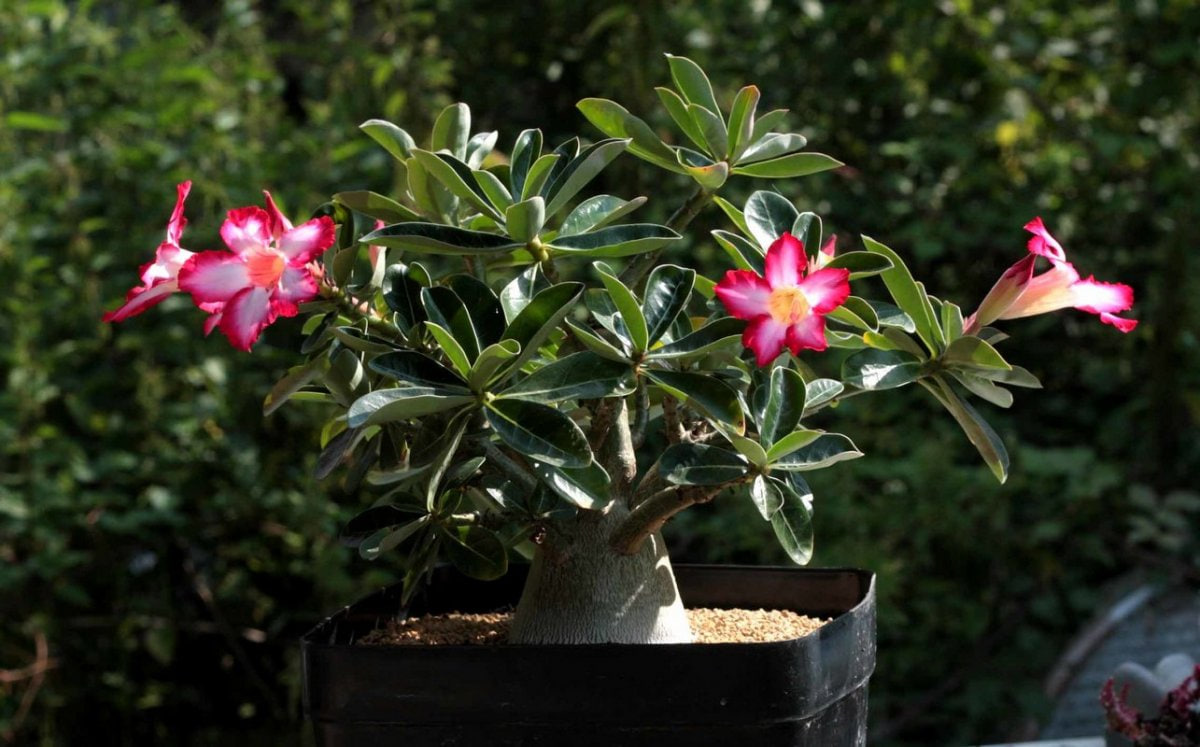
The flowers are a captivating combination of hot pink and white, with yellow lining the bright red veins towards the flower’s center. The actual shrub is made up of a caudex, which is a combination of roots and stems. The very light tint of the skin and bark contrasted with the dark green color of the leaves. However, use caution as this plant is poisonous!
Yuccas
Yuccas is one of the best succulents for full sun it grows as both shrubs and trees. You must use caution when handling their extremely tough leaves because they don’t tolerate any predators, much alone people! Specific species of them produce edible fruits, however, picking them without studying the various kinds first is not advised.
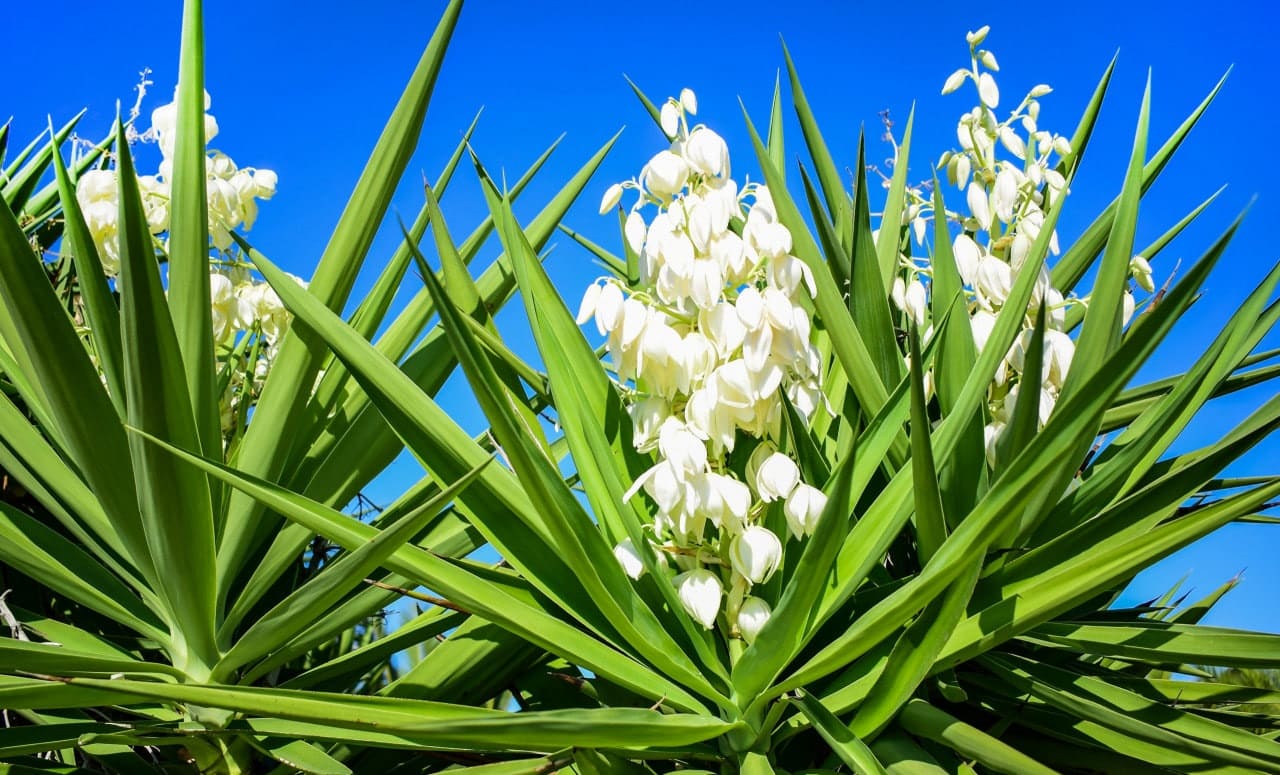
Yuccas have strong bases that resemble tree trunks and can grow very tall. The term “Yucca rostrata” refers to a species of yucca that is primarily non-branching and has silvery leaves with bent spines at the tips of the leaves.
Agave – Snow Glow
Ancient agave breeds are one of the best succulents for full sun, they are used by tequila trades to create their products. The majority of breeds that people use are unsuitable for making tequila and are therefore categorically regarded as decorative. As they grow bigger, agaves provide a good barrier. A striking variant is Snow Glow.
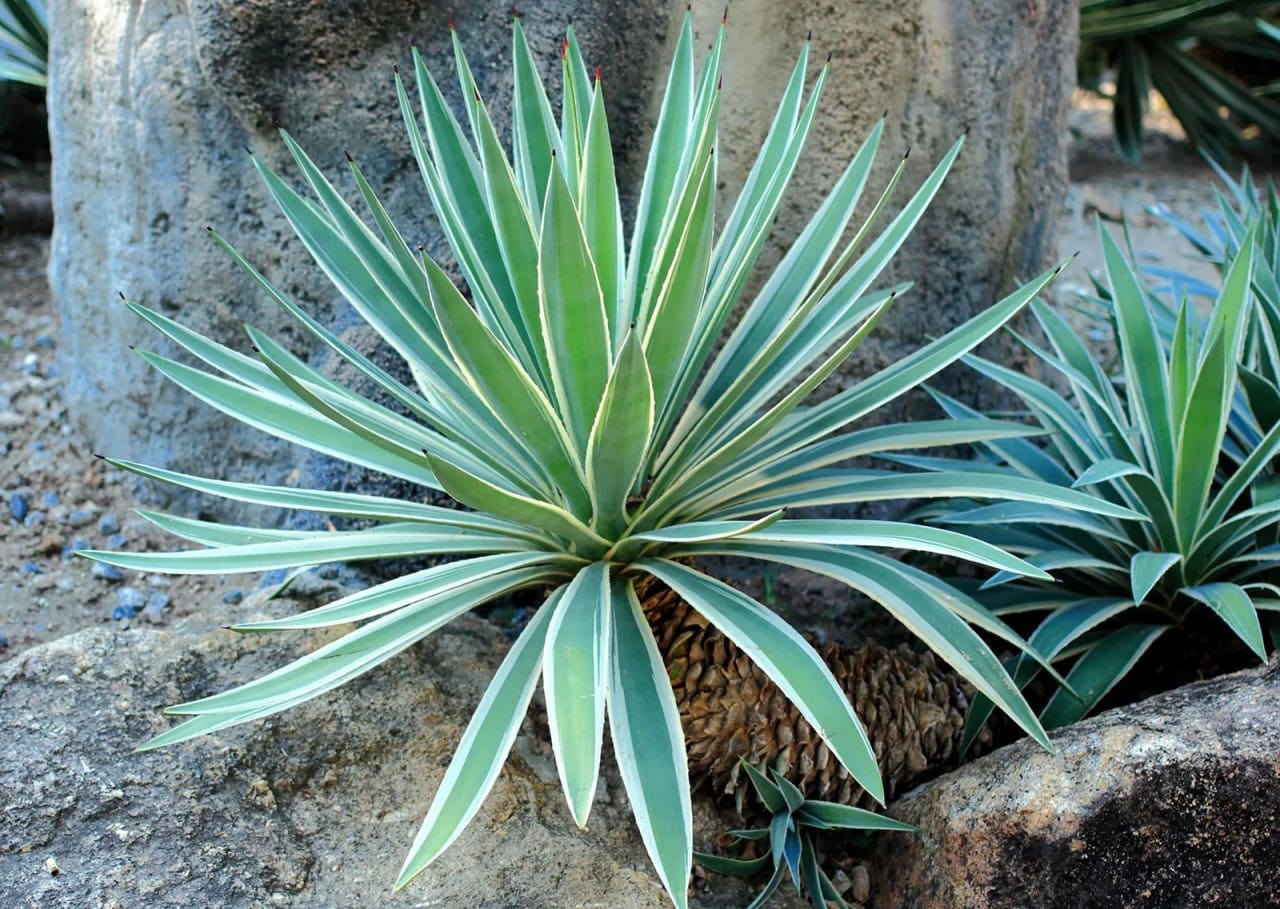
This plant glows thanks to its variegated leaves, deep oxblood crimson margins around each leaf, and a soft glow from a farina dusting.
Cereus
Cereus is a cactus native to the deserts of South America and Africa where too much sun is present. This plant produces up to ten-foot-long, tall, slender columns. It can withstand full hot sun conditions without any problems and has thick, ribbed stems with spines around its edges. Your Cereus will flourish if you place it somewhere that receives at least 8 hours of direct sunlight each day.
Bonus: Check Also Cereus Cactus Care Guide
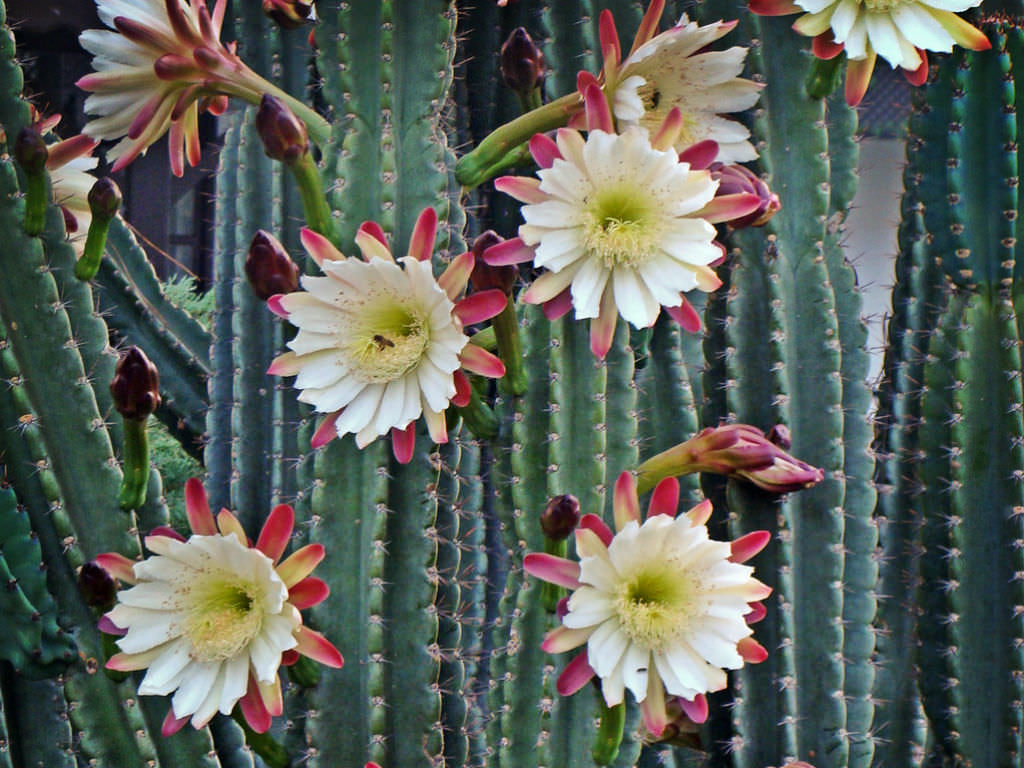
Echinocereus
Cactus that is endemic to Mexico and the southwest of the United States are called Echinocereus.
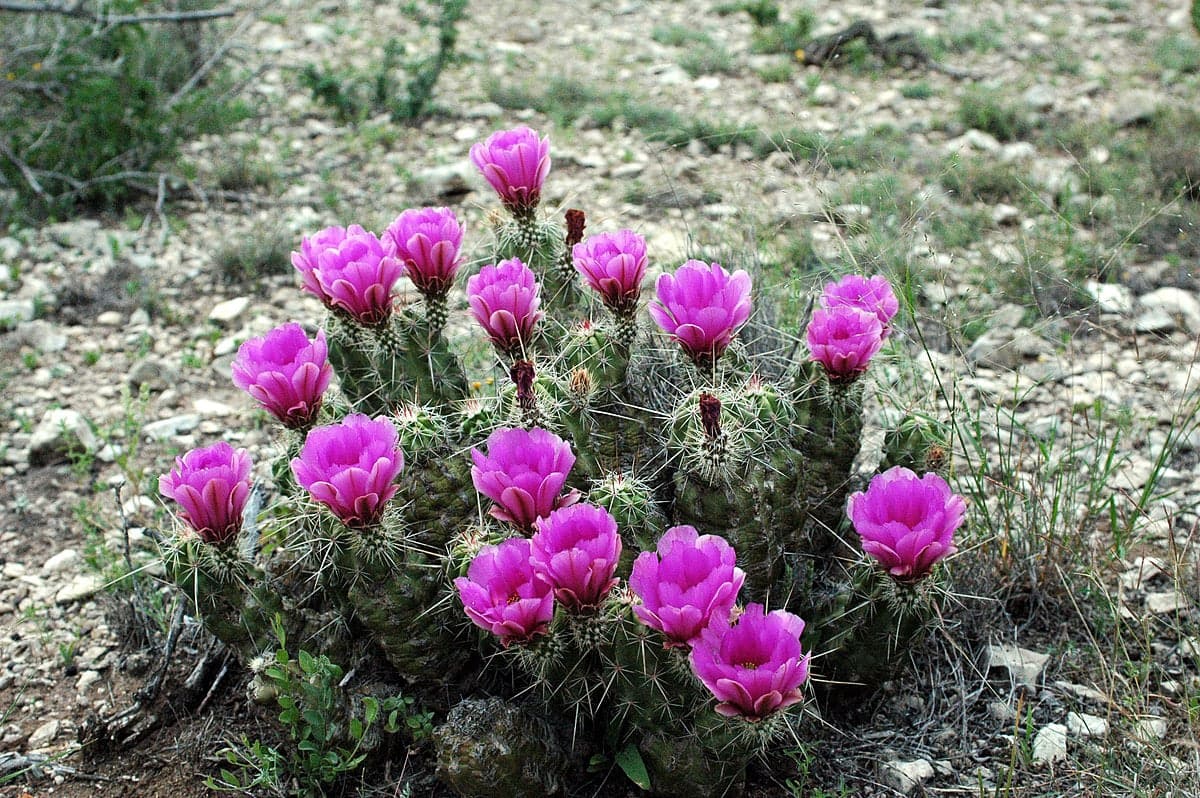
It grows in dense clumps of spiky columns that can be up to 4 feet tall. This plant prefers hot sun and requires at least 6 hours of it every day.
Euphorbia
Over 2000 species of succulent plants belong to the genus Euphorbia. If these adaptable plants are not exposed to direct sunlight during the hottest parts of the day, they can tolerate full sun.
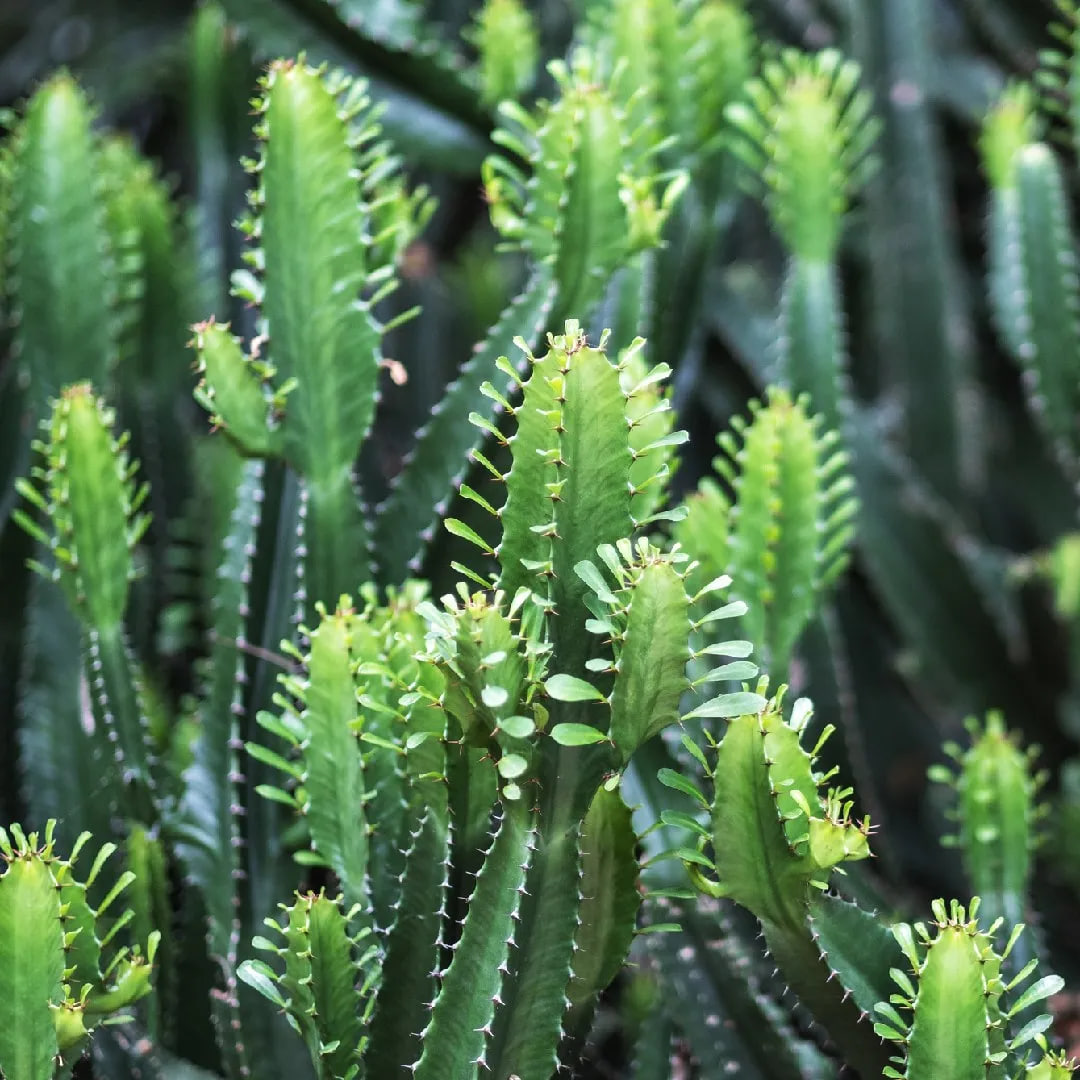
Put your euphorbias or pencil tree plant somewhere that gets at least six hours of direct sunlight every day.
Senecio Mandraliscae
Include Senecio Mandraliscae on your list if you want yet another plant that resembles sea coral in your yard. This succulent’s fleshy leaves grow in a way that has earned the nickname “blue chalk sticks.” The pencil-shaped, thin leaves grow vertically. Additionally, its bluish-gray fleshy leaves change to white throughout the summer.
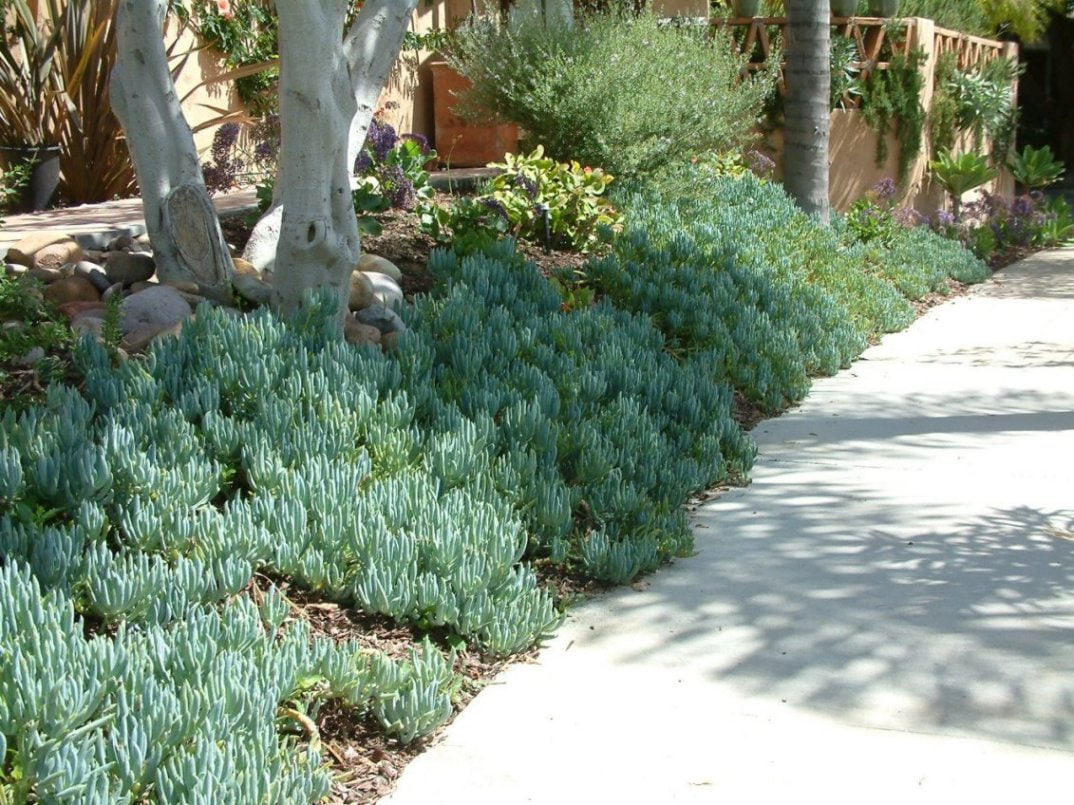
The Senecio Mandraliscae can grow to a height of two feet, in contrast to some of the succulents on this list. However, it requires little upkeep and is drought-resistant. Due to the possibility of its leaves freezing in the winter, you must exercise additional caution around them. They cannot survive in cooler temperatures, and they are easily frozen to death.
What succulents can you grow indoors?
For novice gardeners, the hardy succulents Jade Plant, Pencil Cactus, Haworthias, Lithops, Gasterias, and Elephant’s Food have been shown to thrive indoors. I’ve discovered that growing succulents with more vividly colored foliage don’t fare as well. In Santa Barbara, I raised a paddle plant, which gradually lost its red edge and turned entirely green.
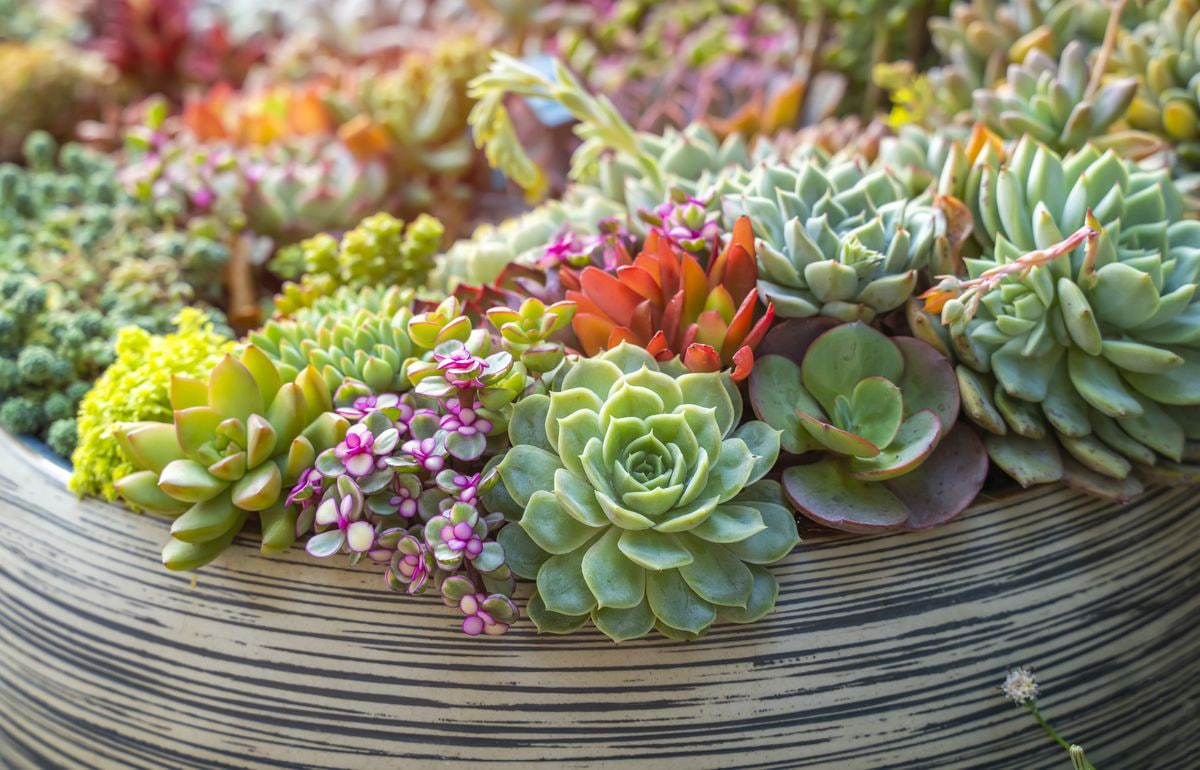
If indoor plants are under other types of environmental stress, such as not receiving enough midday sun or light, they will lose their variegation. After a few successful years, I decided to give it away before relocating to Tucson.
The beauty of indoor plants is that, if you’re an expert gardener, you might have a variety of succulents planted indoors that thrive as houseplants.
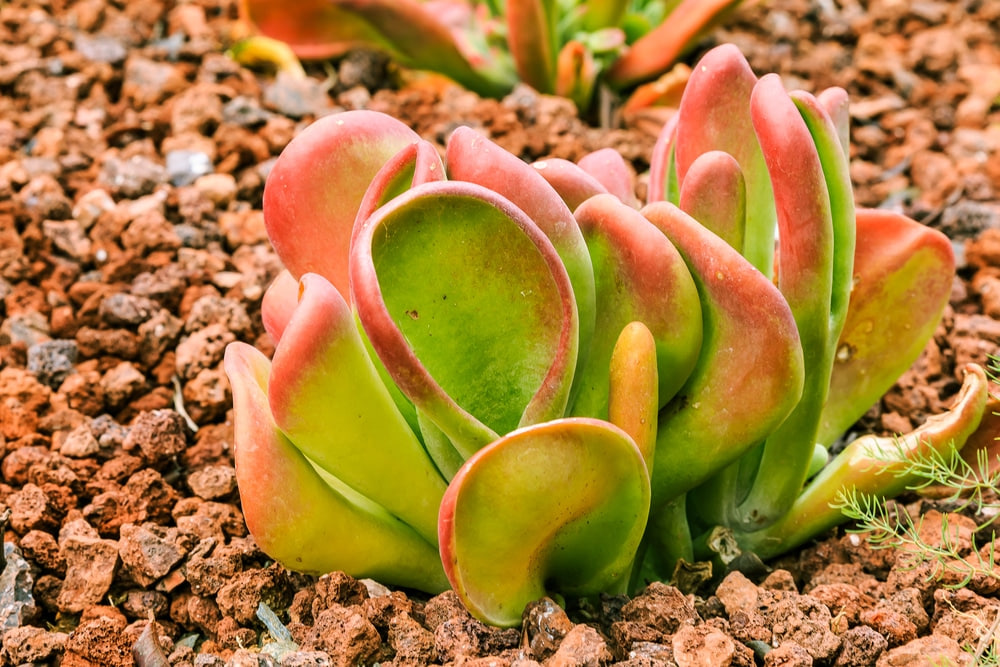
How to grow succulent plants that like full sun and heat indoors?
Indoor cultivation of succulent plants that prefer full sun and heat can be rewarding and fun. While most succulents prefer sunny environments for growth, you may successfully grow them indoors with the right care and attention. Here are some recommendations for growing succulents inside that like heat and full sun.
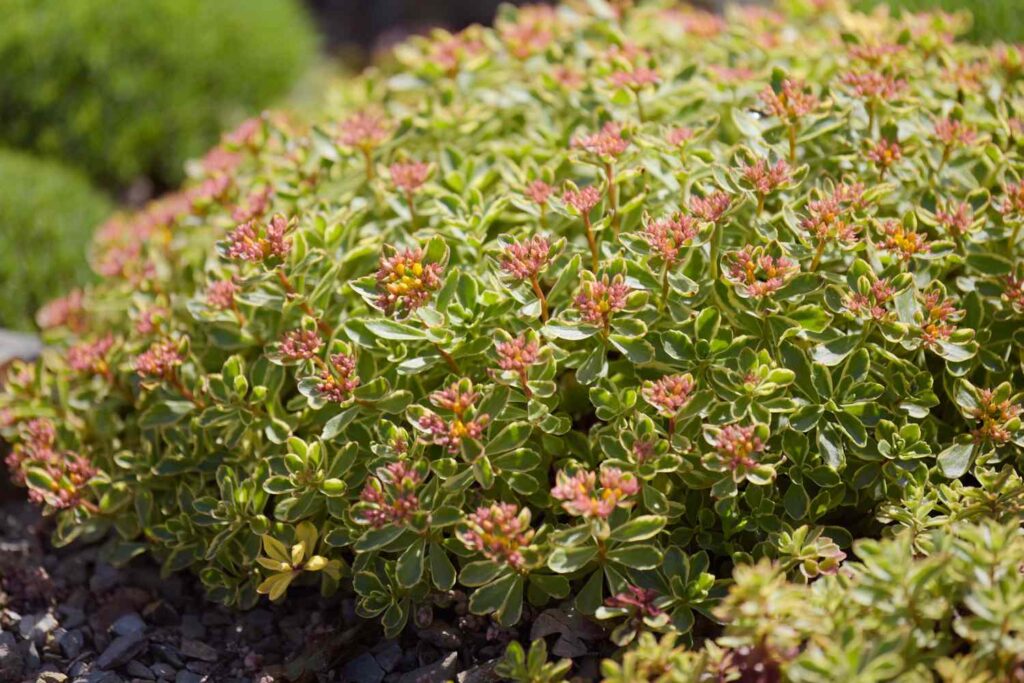
Pick the appropriate species of succulent
Choose succulent species that can withstand the heat and full sun of indoor environments. Haworthia, Echeveria, Sedum, and certain varieties of Aloe are a few excellent choices.
Provide adequate sunlight
A place that receives strong, direct sunshine for at least 4-6 hours every day is ideal for your succulents. The finest windows for getting the most sunshine are often those that face south. Artificial grow lights made exclusively for plants can be used to supplement natural light if it is insufficient in your indoor space.
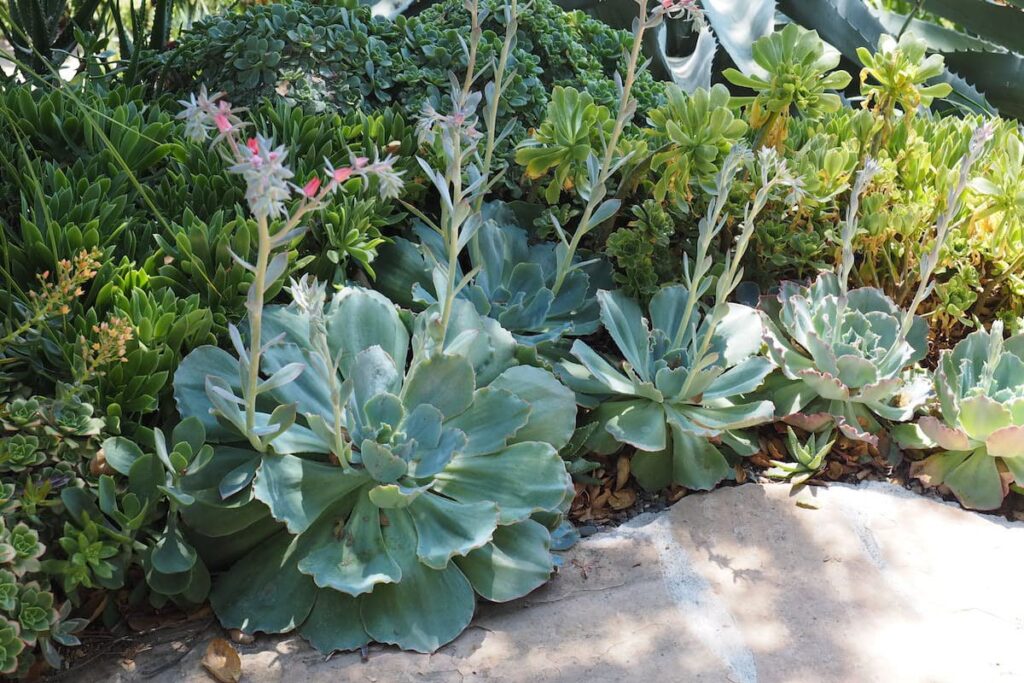
Ensure adequate drainage
Make sure the soil has adequate drainage because succulents need it to avoid having their roots flooded, which can cause rot. Select a succulent-specific well-draining potting mix, or make your own by combining ordinary potting soil with coarse sand or perlite.
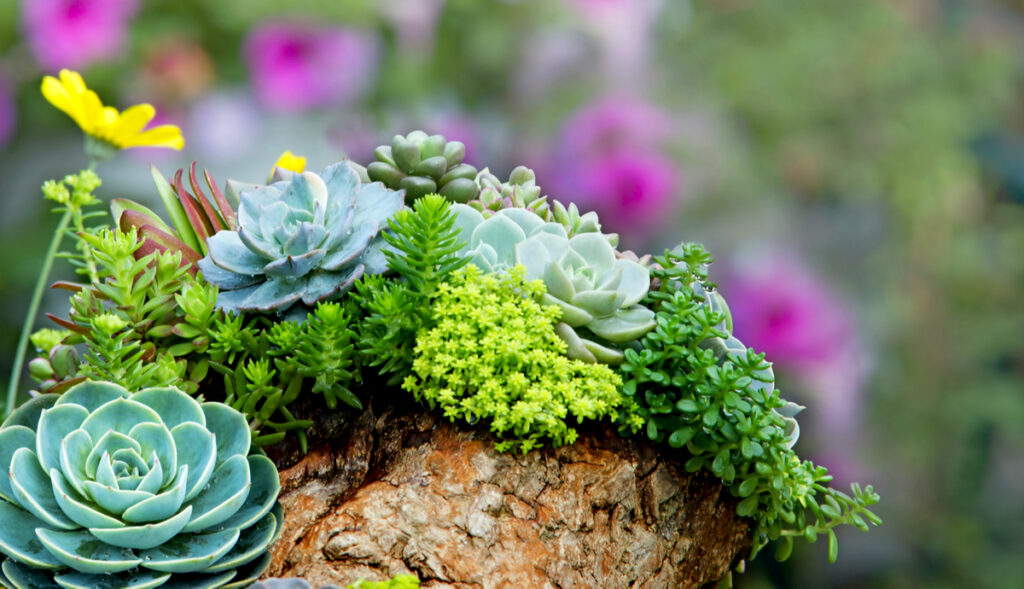
Use the right containers
Choose containers with drainage holes to avoid water buildup at the bottom. This makes it possible for extra moisture to evaporate and prevents the roots from becoming wet for an extended period.
Water sparingly
Use less water because succulents evolved to dry climates and have minimal water needs. To avoid overwatering, let the soil dry out in between waterings. If the soil feels dry after inserting your finger about an inch into it, it’s time to water. When watering, make sure the soil is well saturated and let any extra water run away.
Recommended to Check: Bottom Watering Cactus
Monitor humidity levels
Keep an eye on the humidity levels because succulents prefer low levels, so make sure the indoor climate isn’t overly humid.
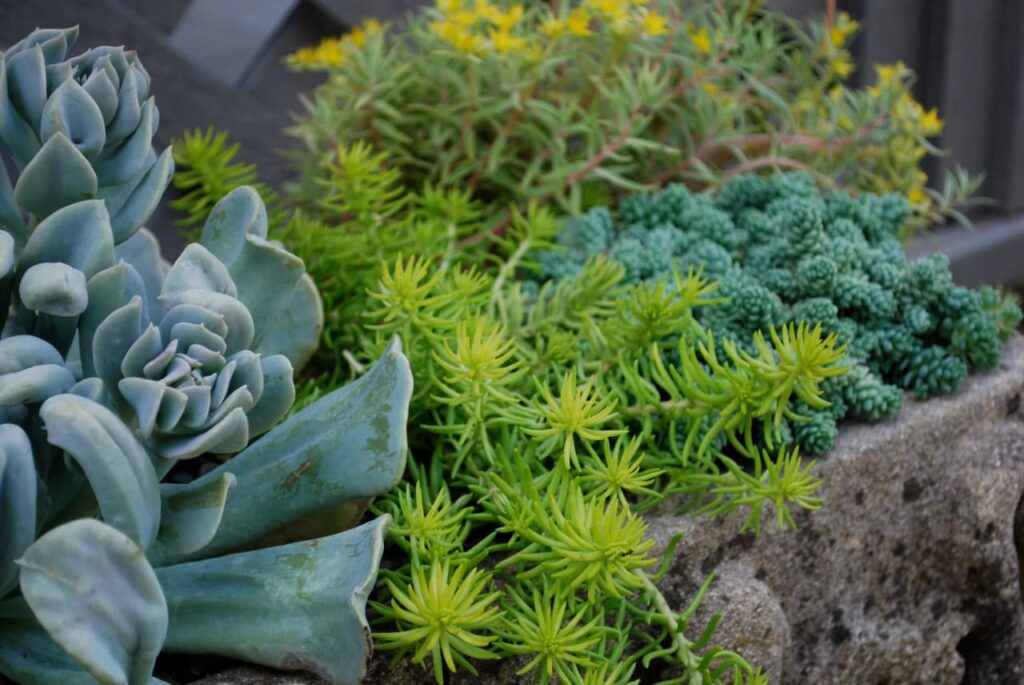
To enhance air circulation, if necessary, use a dehumidifier or position a small fan nearby.
Provide occasional outdoor exposure
Give your indoor succulents regular outside exposure so they can benefit from direct sunlight and fresh air throughout the warmer months. To avoid sunburn or shock, acclimate them to outdoor circumstances gradually.
Rotate the plants
Rotate your succulents every few weeks to expose all sides to sunlight to guarantee growth. This prevents them from leaning in the direction of the light source and favors balanced growth.
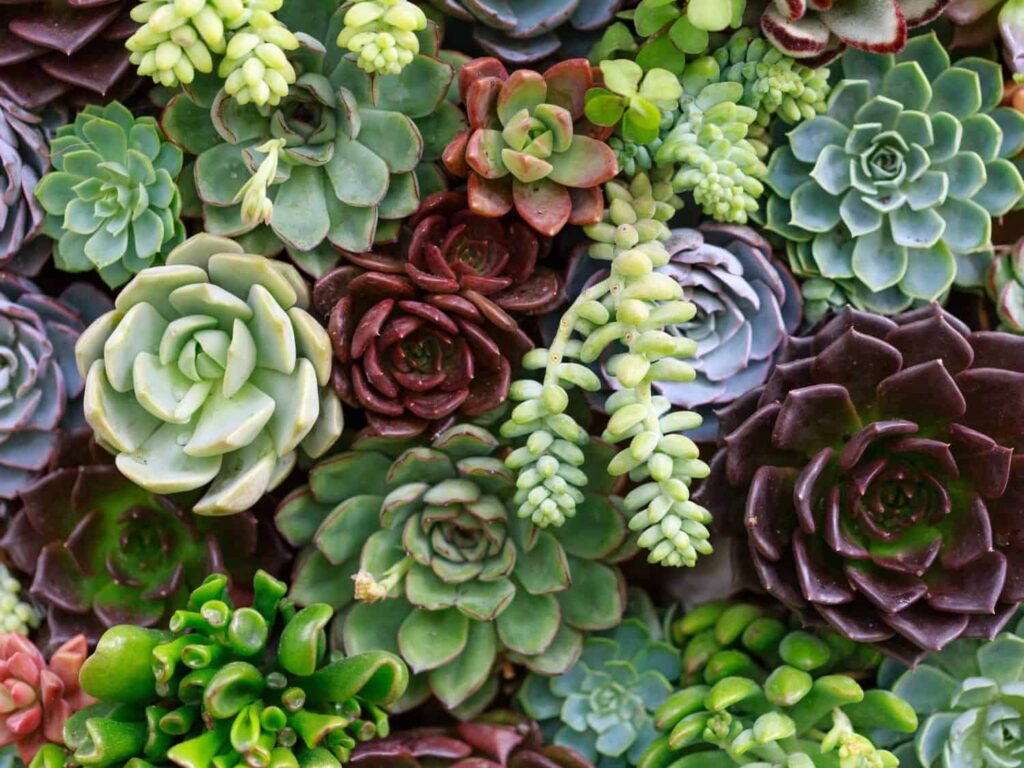
Look out for indications of stress or issues
Pay attention to the condition and appearance of your succulents. It’s a sign that plants aren’t getting enough light if they start to stretch or get leggy. They should move to a more sunny location. Additionally, keep an eye out for disease or pest indicators and take the necessary action if found.
You may grow succulents that love full sun and heat indoors by following these instructions and creating the ideal environment. Keep in mind that each succulent species has different needs, so make sure to adjust your care regimen accordingly.
Acclimating outdoors succulents
Introduce succulents cautiously if you’re taking them outside for the first time to ensure their optimal health.
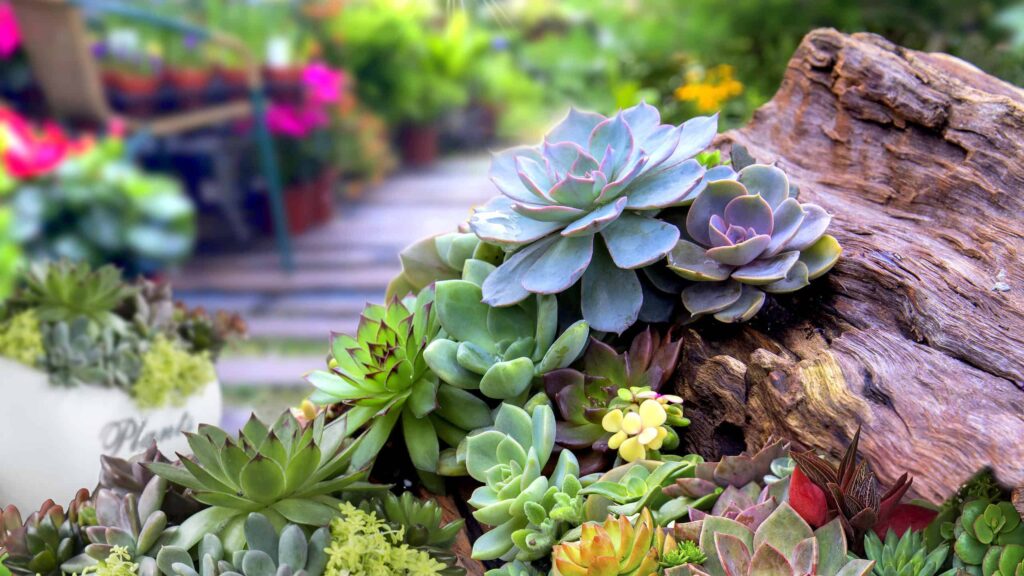
The plants should first be placed in a shaded area, then over several weeks, they should be progressively moved into places with more sunlight. As a result, they will be able to adapt gradually without getting burned or wilting by the strength of the sunshine.
FAQ
What succulents like hot sun?
Full sun succulents can tolerate and even thrive under direct sunlight. Some succulents that tolerate and even like direct sunshine are listed below.
Agave
Agave plants have rosette-shaped leaves and can withstand extreme heat and direct sunlight.
Aloe vera
It is a well-known succulent that likes full sun and direct sunlight. It can endure extreme temperatures and is frequently used for its therapeutic benefits.
Echeveria
Echeveria species are typically succulents that love direct sun and come in a variety of colors and forms.
Sedum
Sedums, sometimes referred to as stonecrops, are a variety of succulents that can withstand warm and sunny weather under direct sunlight.
Jade plants
They are hardy succulents that can withstand full sun or direct sunlight, but they may require some shade in severely hot conditions.
Sempervivum
Popular succulent Sempervivum (Hens and Chicks) has rosette-shaped leaves and can withstand hot, sunny temperatures.
Kalanchoe
The Kalanchoe plant is well-recognized for its vibrant flowers. It can withstand direct sun, however, it may benefit from some shade during the warmest part of the day.
It’s crucial to remember that even though these succulents can stand hot direct sun, they still need hydration. Make sure to provide them with well-draining soil, water them appropriately, and keep an eye on their health to make sure they are thriving in the surroundings.
Do Indoor Succulents Need Exposure?
Where you live will determine what kind of exposure your succulents receive. Succulents generally require a lot of strong, natural light to grow indoors. Here in Tucson, I have two indoor mixed succulent gardens flourishing on windowsills. Where they receive adequate light to thrive, one grows in a north window and the other in an east-facing window.
Your needs will be more if you live in a region with less sunlight. The ideal location would be close by but not in a south or west window. For example, I grew up in Connecticut and have also resided in Boston and New York City. In these locations, succulent plants require more light exposure.
Healthy succulents are ensured by four important factors. The key is to provide your succulents with adequate light, hydrate them correctly (avoiding overwatering), use a succulent and cactus mix, and plant them in pots with drainage holes. Succulents are prone to root rot, and an excessive amount of water will kill them.
Can succulents be in full hot sun?
Even though many succulents can survive and even benefit from direct sun, it’s vital to remember that not all succulents are equally suited to harsh direct sunlight. Particularly if they come from places with more shade or indirect light, certain succulents prefer greater shade or filtered sunlight. It’s important to keep the following things in mind while placing succulents in direct sunlight:
Acclimation
Succulents require some time to adjust to the increasing heat and direct sunlight. To avoid sunburn or stress, it is best to gradually expose them to increasing levels of direct sunshine over a few weeks when moving them from lower light to direct sun.
Heat tolerance
Some succulents are naturally more tolerant to heat than others. While some species, like agave, aloe vera, and echeveria, can usually withstand full sun, other species might need greater protection from the intense heat.
Environment
How well succulents tolerate direct sunlight depends on the environment in your particular location. Providing some shade or partial sun during the warmest part of the day may be advantageous if you are in an exceptionally hot and dry area.
Soil and watering
To prevent root rot, succulents grown in direct sunlight need soil that drains effectively. Additionally, careful watering techniques are essential because succulents may dry out more quickly in the hot sun. It is normally advised to water extensively but sparingly, letting the soil dry completely in between applications.
Observation and correction
Monitor your succulents closely for signs of stress in your succulents, such as wilting, discoloration, or sunburn. Consider adding more shade or moving their placement to an area with a little less direct sunlight if you notice any problems.
Keep in mind that in hot regions, even succulents that love direct sunlight may benefit from some protection during the hottest part of the day.
What succulents do good in sun?
Kalanchoe, Opuntia (Prickly Pear Cactus), Agave, Aloe vera, Sedum, Echeveria, Sempervivum, Crassula ovata (Jade Plant), Portulacaria afra (Elephant Bush), thrive in sunny environments.
What is the maximum heat for succulents?
Outdoor succulents often have a high tolerance for heat and can handle a wide range of heat and hot sun exposure. Succulents’ maximal heat tolerance, however, can change based on the species and the environment in which they are found.
Succulents can generally tolerate temperatures up to 90°F (32°C) without any difficulty. Some heat-resistant succulents may endure even greater temperatures, up to or slightly above 100°F (38°C).
Even though succulents are thought to be heat-tolerant, it’s crucial to keep in mind that they might still struggle in extremely hot temperatures. Long-term sun exposure can cause dehydration, sunburn, or heat stress, especially when combined with dry circumstances.
It’s crucial to give succulents the right care and atmosphere for them to withstand extreme temperatures. This involves making sure there is enough shade or filtered direct sunlight during the warmest part of the day, making sure the soil drains adequately, and changing watering procedures to minimize dehydration.
It is advised to provide your succulents extra protection, such as shade or temporary relocation to a slightly cooler place if you reside in an area with excessively hot weather or encounter heat waves. To make sure your succulents or versatile plants stay healthy during hot spells, keep a close eye on them and adjust if necessary based on how they react to the heat.
What are some symptoms that show that succulents have been overwatered?
Overwatering is a frequent problem that can harm succulents. Because of their special water-storing capacities and adaptation to arid settings, these plants can suffer from a variety of issues from too much moisture. Here are some warning indications of succulent overwatering that you should watch out for.
Yellowing or transparent leaves
Succulents with excessive watering may have leaves that are yellow or transparent. This happens as a result of the roots being wet, which impairs their ability to effectively absorb nutrients. The leaves may also get mushy and squishy due to the excessive wetness.
Soft, mushy, or rotting stems
Succulent stems can become soft, mushy, or even begin to rot when they are overwatered. This is a clear sign of rot, which is brought on by prolonged contact with too much moisture.
Leaf drop
Succulents that receive too much water may lose leaves, especially near the bottom of the plant. When handled, the leaves could simply fall off.
You must change your watering habits immediately if you see any of these symptoms. Before watering it once more, let the soil entirely dry out. Also, make sure your succulents are in pots with drainage holes and well-draining soil.
Conclusion
Most succulents can tolerate high temperatures and intense sunlight, making them good candidates for sunny environments. Succulents with a history of tolerance to direct sunlight include Agave, Aloe vera, Sedum, Echeveria, Sempervivum, Crassula ovata, Portulacaria afra, Kalanchoe, and Opuntia.
Even though each species of succulent may have its own preferences and heat tolerance thresholds or limits, they all have adaptations that make it possible for them to endure high temperatures and direct sunlight. However, it’s critical to keep an eye on their health, provide them the attention they need, and adjust as needed, particularly in times of intense heat and full sun.
You can turn your outdoor space into a lovely and sustainable escape by choosing these heat-loving succulents and using the right care techniques to produce a vibrant and resilient succulent garden that thrives in the full sun, in addition to knowing how much sun they need to live.

Greetings, dear succulent lovers! I’m Jennifer West and I’m happy to share with you practical tips and guides on growing and caring for succulents, as well as all the magical facts about these unique plants. Grateful to have you on this green journey with me! Check out more about our team here.




